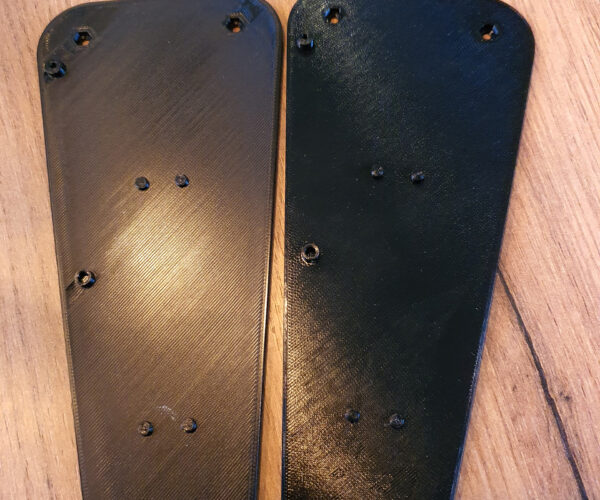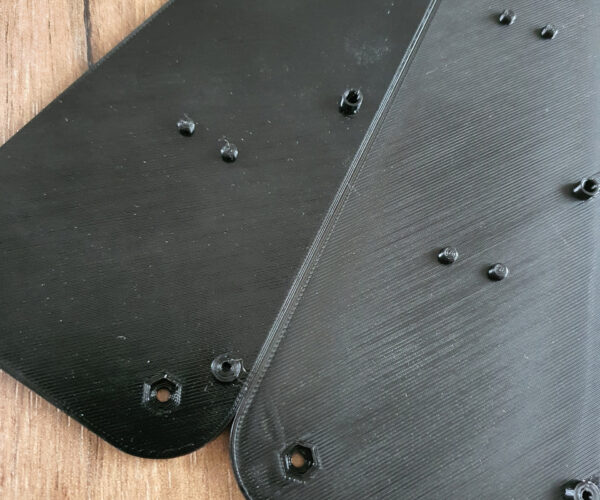Problem with top layer finish PLA
I am having some issues with a part that I printed in PLA before many times without issues. It's been a while since I printed it, and using the same file in Octoprint I get a very different result. The top layer is very rough and has a very mat/dull finish. What could be causing this? The old print is very smooth and has a very even glossy finish.
-Since the last print of this part many months ago, I did upgrade from MK3S to MK3S+ and upgraded to the latest firmware
-Fillamentum extrafill black PLA-Tried 2 different rolls of filament, old and new, no difference-Before I printed at 195 degrees, I went back to 210, which improved glossiness in the center a bit, but nothing like before.
Could I be over or under extruding due to the different cooling of the MK3S+? Or were changes made in the firmware that could cause the same file not to print the same?
You're sure on both prints the same Top fill pattern was used in slicer? Default is Monotonic which gives more glossy/smooth appearance.
[Mini+] [MK3S+BEAR]
RE: Infill
Yes, it’s using the same Monotonic top layer infill.
Moisture
Very likely the difference is a brand new roll from the factory (weeks old) versus a brand new roll on your shelf (months old). Try drying your filament. Vacuum sealing, desiccant are not enough to keep filament from absorbing moisture in your home.
The only way to be sure is to be methodical and check each change and factor individually. So you could roll back the firmware to the version you had previously (but you would also likely have to do an eeprom reset and full calibration from scratch again) and try printing. If they causes a reversion to the old print appearance then its would be the firmware change. If it still prints like now then it would rule that out, leaving the new hardware/cooling system or the filament as suggested. Basically process of elimination. That's going to be a lot of effort.
From what version of firmware did you change from and to ? At least you could check the release notes of the intervening versions that way. For example was your previous firmware using the LA1.0 values as opposed to the LA1.5 values current and recent firmware uses ? That could certainly cause differences in printing. I know people who had to re-slice old project files with the new filament profiles with LA1.5 settings to get similar prints as the 'auto' conversion didn't quite cut it on old gcode files.
more info
Thanks for your replies.
-old firmware was 3.9.1 or 3.9.2, if I remember correctly. I went back to the latest one that supports the Super pinda, but same result.
-I tried drying the filament in the oven for 4 hours at 50 degrees Celsius, but it gave the same result as the 'new' one. Maybe I should do it a bit longer? The new roll was also in my cabinet for many months.
-My Z height was a bit to close and reducing it, made the layer already more smooth. I slowed the speed for the top layer infill to 20m/s which also improved it around the center of the print, but the edges remain more dull and rough.
- I did notice that when loading the filament, the material already looked more dull coming out of the nozzle than I would expect. Suggesting indeed something with the filament. How this can also change the roughness of the print, I don't know.


